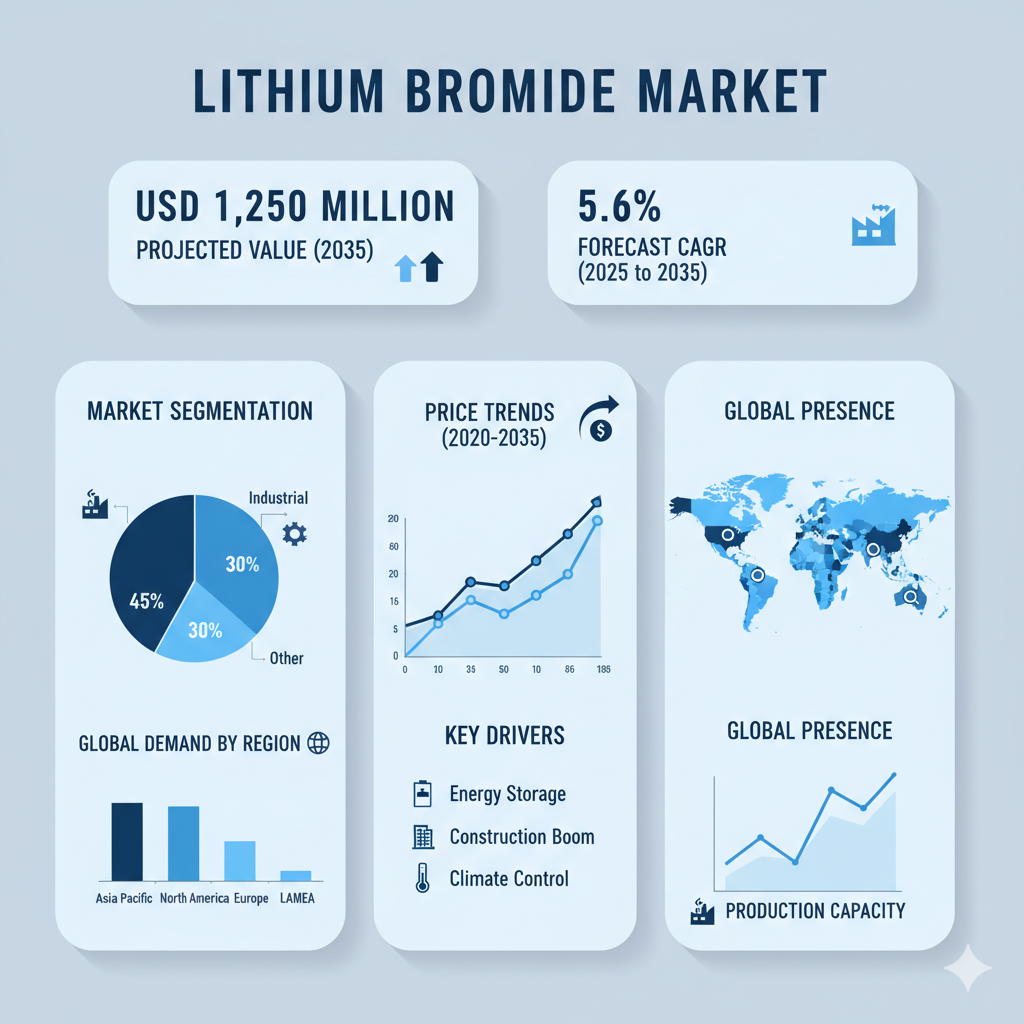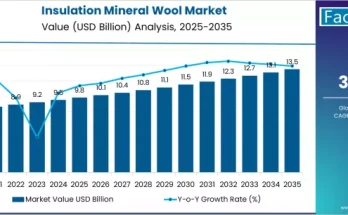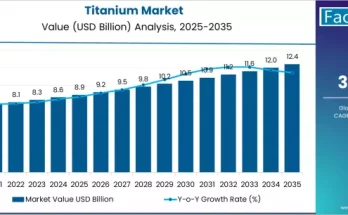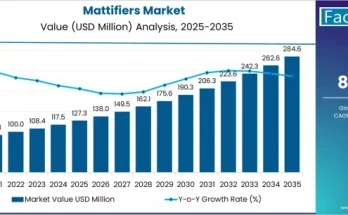According to recent market analyses, the global lithium bromide market is expected to reach USD 1,250 million by 2035, up from USD 725 million in 2025, registering a compound annual growth rate (CAGR) of 5.6% between 2025 and 2035.
Market Overview
Lithium bromide is a highly soluble compound composed of lithium and bromine. It serves primarily as an absorbent in air conditioning and cooling technologies. Its unique ability to absorb water vapor efficiently enables it to maintain stable temperatures, making it indispensable in both industrial and commercial applications. Over the years, the market has expanded beyond traditional industrial uses, finding new opportunities in advanced cooling technologies, chemical processing, and semiconductor manufacturing. The shift toward sustainable energy consumption and environmentally friendly refrigerants is also playing a crucial role in driving global demand.
Product Type Insights
The lithium bromide market can be classified into two main product types: lithium bromide solution and lithium bromide anhydrous. Among these, lithium bromide solution holds a significant share of the market due to its widespread use in absorption chillers and air conditioning systems. The solution form provides consistent thermal performance and ease of handling, which is particularly valuable in large-scale HVAC installations. On the other hand, lithium bromide anhydrous is primarily used in high-purity industrial applications, especially within the pharmaceutical and chemical sectors. Its stable and water-free composition makes it suitable for use as a catalyst and desiccant in sensitive chemical synthesis processes where moisture control is critical.
Form Analysis
In terms of form, lithium bromide is produced and supplied in both liquid and powder forms. The liquid form dominates the market because of its extensive use in air conditioning and absorption refrigeration systems. It is an ideal absorbent for water vapor and plays a key role in maintaining temperature consistency in industrial and commercial cooling applications. The powder form, however, is gaining traction in industrial drying, desiccant systems, and chemical processes due to its ease of transport, storage, and compatibility with other industrial materials.
Application Insights
The major applications of lithium bromide include air conditioning systems, absorption refrigeration, heat exchangers, desiccant systems, industrial drying, and water treatment. In air conditioning systems, lithium bromide acts as an absorbent that ensures efficient cooling performance by absorbing moisture and regulating humidity. In absorption refrigeration, it serves as a central component of lithium bromide–water chillers, which are recognized as environmentally sustainable alternatives to conventional vapor compression systems. Its role in heat exchangers and desiccant systems is also expanding, as industries continue to seek energy-efficient and cost-effective thermal management solutions.
End Use Industry
The HVAC and industrial cooling sector remains the largest end-use industry for lithium bromide, supported by rapid urbanization, the growth of smart cities, and the rising need for efficient cooling technologies. The chemical processing industry also represents a key segment, where lithium bromide is utilized as a reagent and catalyst in various reactions. In pharmaceuticals, it is used in specialized synthesis processes and moisture-controlled production environments. The electronics and semiconductor industries have shown increased adoption of lithium bromide for precision cooling and desiccation processes that enhance device performance and reliability.
Regional Outlook
Geographically, Asia-Pacific leads the global lithium bromide market, with China, India, and Japan emerging as major contributors. The region’s dominance is attributed to rapid industrialization, expanding electronics manufacturing, and rising demand for HVAC solutions in commercial and residential infrastructure. North America and Europe are also witnessing notable growth, driven by advancements in green refrigeration technologies and stringent environmental regulations that promote sustainable industrial practices.
Recent Developments and Competitive Landscape
Recent developments in the lithium bromide market highlight a trend toward technological innovation, capacity expansion, and strategic collaboration among leading producers. Major companies such as Honeywell International Inc., Merck KGaA, Albemarle Corporation, Tetra Technologies Inc., and Fudan Forward Technology Co. Ltd. are investing in research and development to improve the efficiency and sustainability of lithium bromide-based products. Many key players are pursuing mergers, acquisitions, and joint ventures to expand their global reach and enhance production capabilities. There has also been a growing focus on developing eco-friendly production processes that minimize waste and energy consumption. Competition within the market remains intense, as both established and emerging companies aim to deliver superior performance materials tailored to diverse industrial requirements.
Request for Discount: https://www.factmr.com/connectus/sample?flag=S&rep_id=10951
Buy Now at USD 4500: https://www.factmr.com/checkout/10951
Check out More Related Studies Published by Fact.MR Research:
Titanium Dioxide Nanoparticles Market: https://www.factmr.com/report/4837/titanium-dioxide-nanoparticles-market
Trifluoroacetic Acid Market: https://www.factmr.com/report/trifluoroacetic-acid-market
Canvas Fabric Market: https://www.factmr.com/report/5458/canvas-fabric-market
Soft Skin Adhesives Market: https://www.factmr.com/report/soft-skin-adhesives-market



